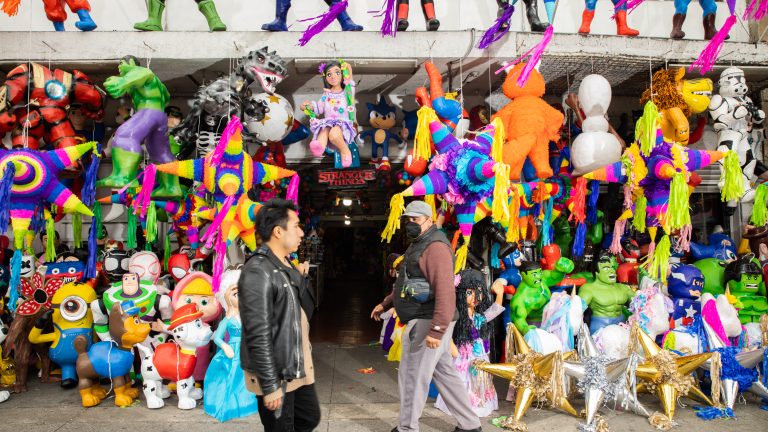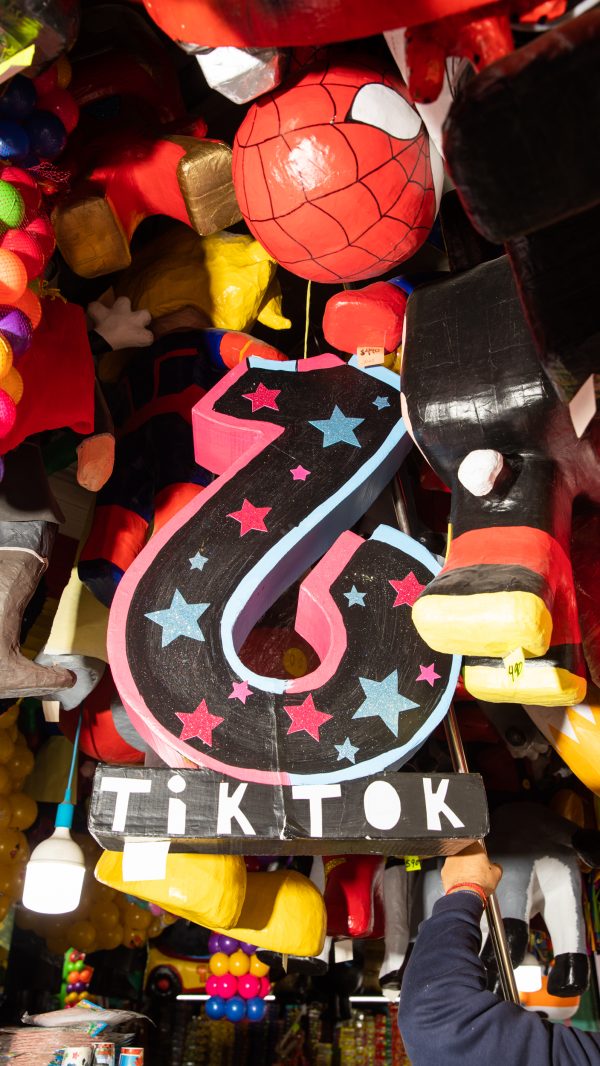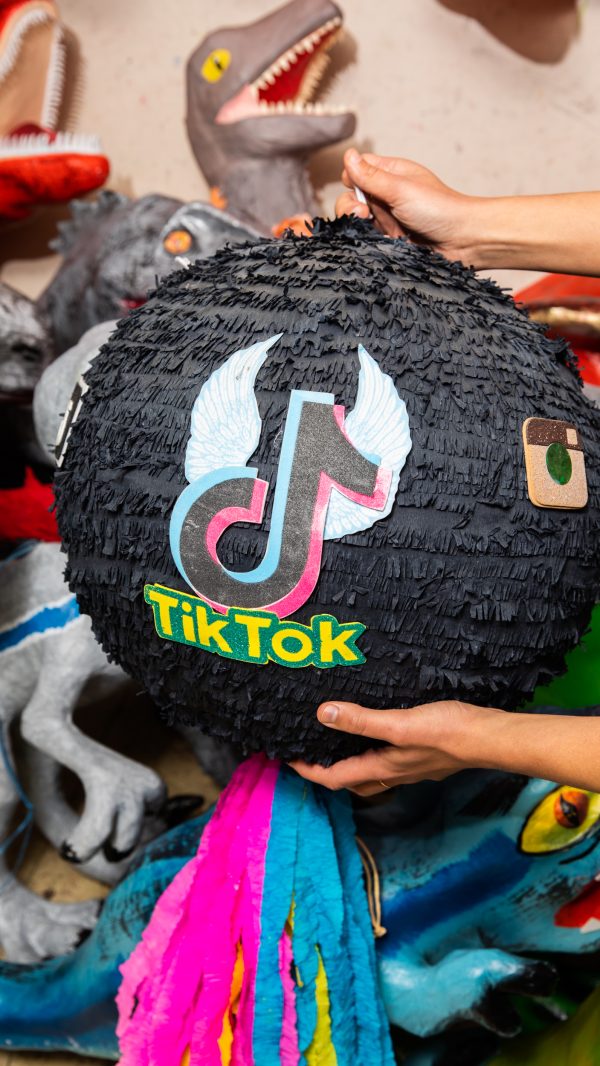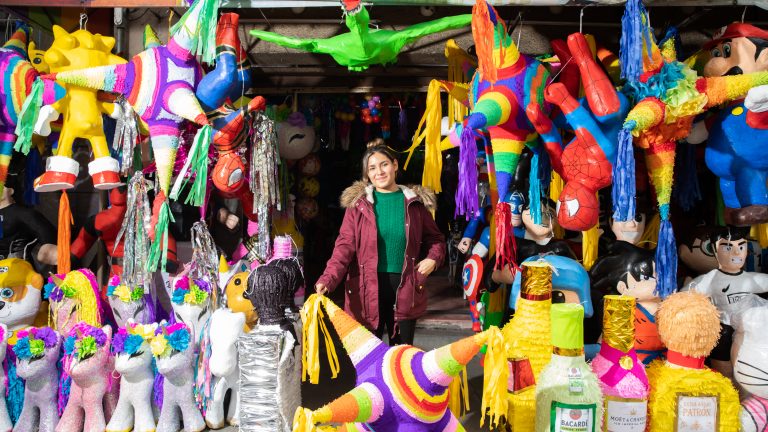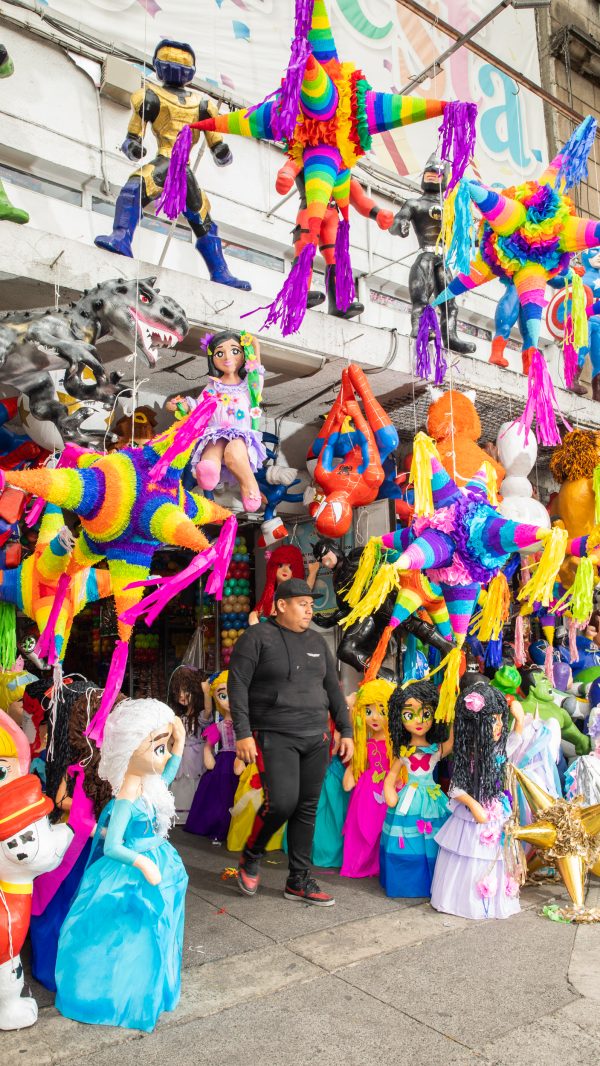A street in Portales, a neighborhood in Mexico City, houses a bustling hive of vendors and shoppers getting ready for New Year’s celebrations. All of the piñatas that hang outside a shop called El Castillo de las Piñatas are giant seven-point stars. This specific shape is thought to be how piñatas were originally conceived by Catholic evangelists in the 16th century. In recent years, the star-shaped piñatas have lost popularity, clearing the way for more modern creations.
“These [star-shaped piñatas] are just for the holiday season,” Giovany Cortés, who runs the shop with his family, told Rest of World. “What we usually sell during the rest of the year are the ones shaped as cartoon princesses or things that are trending. The TikTok-themed piñata is now going out of fashion, but we still have one left.” Inside the shop, among piles of candy and paper ornaments, Cortés shows off a giant TikTok-logo piñata, next to another of a massive heart-eyes emoji.
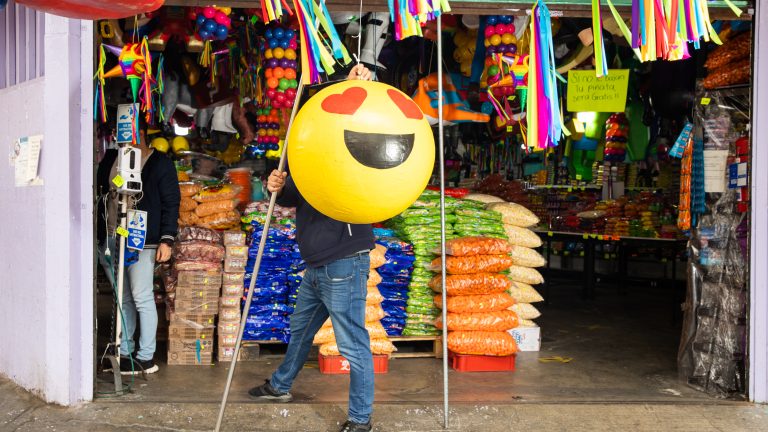
A traditional part of Mexican culture for centuries, piñatas have become a reliable indicator of popular cultural trends. Over the past few decades, piñata makers have slowly drifted from traditional forms in favor of cardboard representations of characters from movie franchises or cartoon series. To avoid copyright infringement, they are never exact replicas. As pop culture trends increasingly move online, memes, emojis, TV series and gaming-related characters, and even tech companies have inspired piñata makers to keep up with the times. These new designs have transformed the piñatas’ religious symbolism into objects that represent modern global culture, and are being used not only for collective celebrations, but also as individual markers for background décor in social media videos. In the process, they’ve helped a centuries-old tradition of craftsmanship survive.
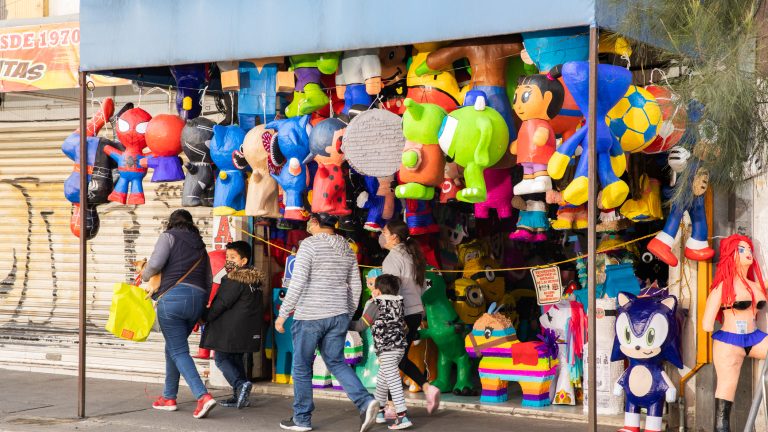
“These artisans are finding new ways of reaching customers by keeping up with the memes and internet culture,” Tania Honorat, a social researcher at Bitácora Social, a research center focused on societies and business, told Rest of World. “There are entire towns of craftsmen dedicated to making piñatas, so [piñata makers] often find themselves innovating to differentiate themselves.”
Piñatería Ramírez in Reynosa, a border city in the northern state of Tamaulipas, is a shop established by the Ramírez family 35 years ago. It started out by making traditional piñatas. These gave the family a steady income, but Dalton Javier Ramírez, the son of the shop’s founders, told Rest of World he started making different piñatas out of boredom after years of replicating the exact same traditional star shape. “I was young, and I suggested we start making piñatas in the shape of famous musicians. They sometimes took off,” he said.
“We were really surprised because we didn’t really understand social media when we went viral.”
When the internet became mainstream, Ramírez began to get a better sense of what people might like. In 2014, during the FIFA World Cup in Brazil, Dutch winger Arjen Robben became a meme after a controversial penalty gave the Netherlands a win over Mexico. Ramírez and his family built a piñata inspired by the Robben meme. It was a huge hit. “We were really surprised because we didn’t really understand social media when we went viral,” Ramírez said.
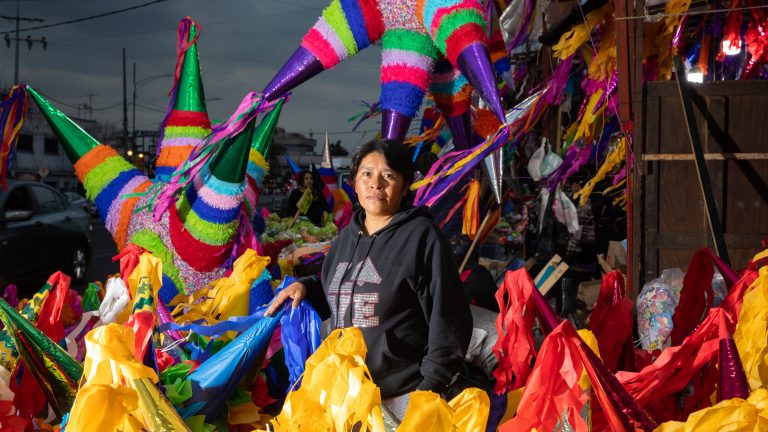
About 80% of his sales are piñatas shaped as children’s TV or cartoon characters, which are a favorite for birthday parties. The rest are online trends — singers, celebrities, politicians, memes, or internet characters — that Ramírez keeps an eye on, in the hopes he’ll go viral. He doesn’t do it so much for the sales but because it’s good publicity.
“Sometimes, a piñata goes viral and we start getting a lot of orders, like the time we built one of Donald Trump in 2016,” he said. “But the orders for these trendy piñatas’ popularity never last too long.”
Of the dozen piñata shops visited by Rest of World in Mexico City, owners and clerks all spoke about the seasonality of trends, because of which many of them build piñatas to order. These custom crafts sell at a premium.
In 2021 and early 2022, TikTok logos were popular custom order requests for piñatas. They cost 250 pesos (about $12), Gabriel Cordero, who helps run a piñata shop in La Merced Market in central Mexico City, told Rest of World. A star-shaped piñata of similar size is priced at 140 pesos (about $7) at Cordero’s shop.
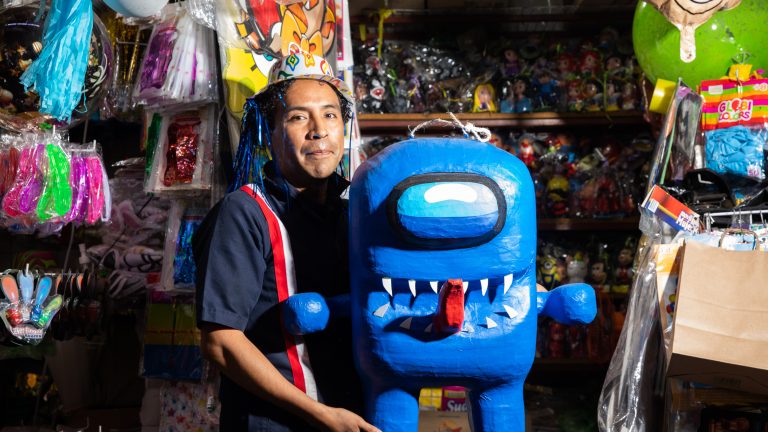
Taking a cue from where their trends emerge from, some piñata makers have taken their businesses online, too. Guadalupe Pérez does not own a brick-and-mortar piñata shop. She takes custom orders via WhatsApp and uses her Instagram page as a catalog for potential clients. She told Rest of World she can make any design within a week for 500 pesos (about $25) — including one for Cheems, the famous dog meme, or a Demogorgon, the monster from the Netflix series Stranger Things.
Designs from several other Netflix series, including Money Heist and Squid Game, are currently in vogue. Diego, a clerk at a store in the Del Valle neighborhood in Mexico City, who did not share his last name because he was not authorized to speak for the business, told Rest of World some of the most popular piñatas are those resembling the creatures of online multiplayer game Among Us, and the TikTok logo. “We even run an entire line of TikTok-themed party items,” he said.
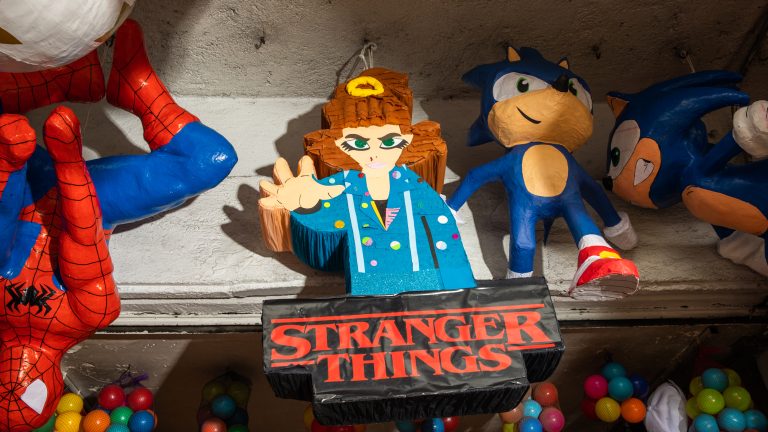
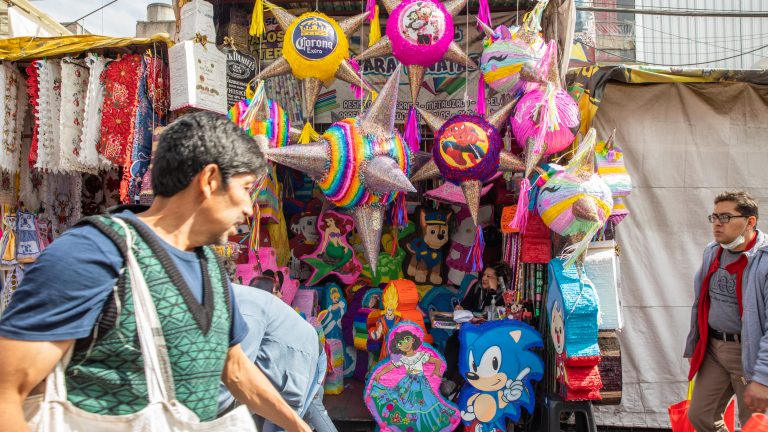
As much as piñatas are cherished elements for celebrations, their representations of culture are not always born of admiration. “Piñatas can also have a cathartic impulse of breaking symbols of what is perceived as evil, like a politician or the coronavirus,” Honorat, the researcher, told Rest of World.
Ramírez said the piñata resembling Trump was successful because “everyone wanted to smash a Trump piñata.” Diego said a young girl came in a few months ago to choose her birthday piñata, and went home with one in the shape of Facebook’s logo. “She said she hated Facebook because all of her cousins were always on the site,” he said, “so she was going to be happy to smash it.”
